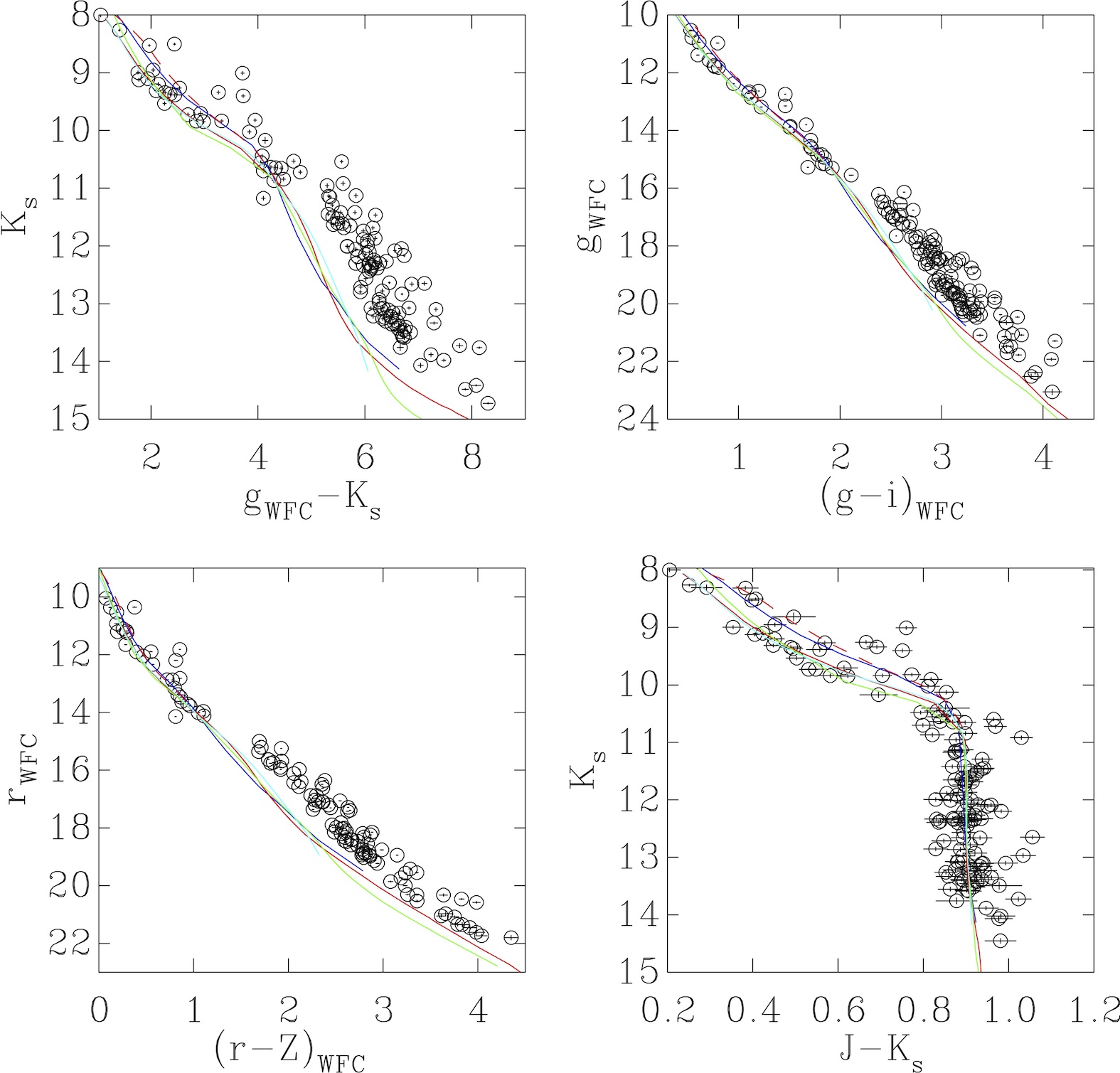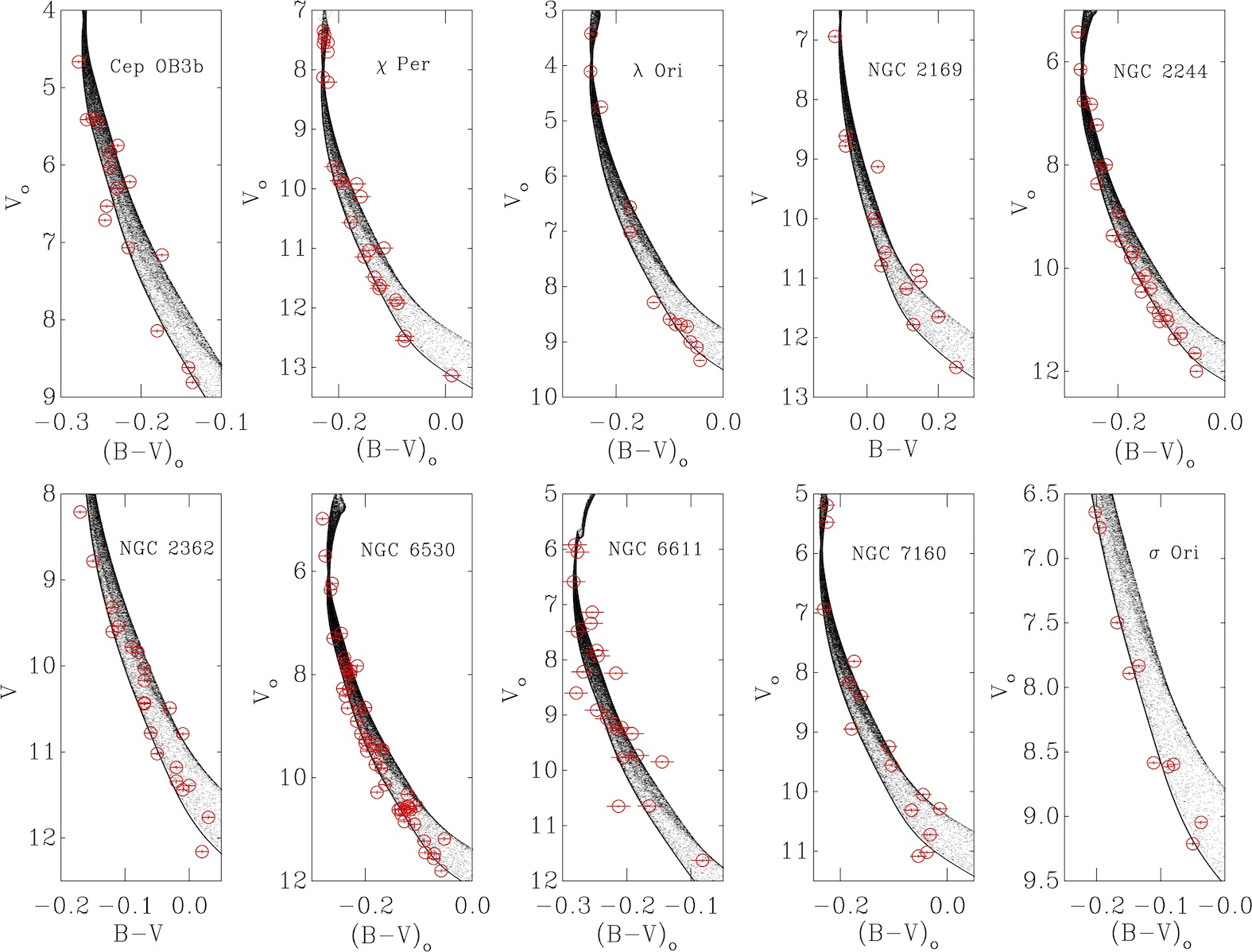Research
My research is primarily focussed on the pre-main-sequence (pre-MS) phase of low-mass stars, following their evolution from when they emerge from their parent molecular cloud to when they reach the main-sequence at a few hundred million years.
In short, my interests can be summarised as:
- How rapidly do stars form, and can we establish reliable and consistent ages for young stars?
- Is the initial mass function universal, or do systematic variations hold the key to understanding the mechanisms governing star and planet formation?
- Does the local environment in which young stars (and discs) form and subsequently evolve affect their intrinsic properties e.g. rotational evolution and circumstellar disc lifetimes?
A copy of my Ph.D. thesis (if you are interested) can be found here.
The ages of young stars
The majority of my previous and current research is based on deriving reliable ages for young stars. Robust and precise ages for young stars are a requirement for improving our understanding of star and planet formation and evolution, providing timescales with which to constrain the physical processes that occur in young stars as they evolve towards the main-sequence.
The problem, however, is that the age of a star cannot be measured directly, instead it must be inferred through the use of models. For young stars these ages are generally derived via the comparison of photometric data of stars with theoretical stellar evolutionary models (or isochrones) using colour-magnitude diagrams (CMDs).
Contraction of low-mass stars
Low-mass pre-MS stars are fully convective objects undergoing gravitational contraction towards the main-sequence. In a CMD, fully convective stars will move approximately downwards along Hayashi tracks, and it is this rapid descent during the pre-MS phase which makes the CMD a powerful tool for ageing stars, and in particular stellar populations such as clusters or star-forming regions.
Currently, however, the ages derived using pre-MS evolutionary models are unreliable. Contemporary pre-MS models do not match the observed shape of empirical isochrones (especially at lower masses) and the derived parameters are heavily model-dependent and can vary (in both age and mass) by up to a factor of 2 (see Fig. 1).
 Fig. 1. Optical and near-IR CMDs of Pleiades members. Overlaid are various 130 Myr pre-MS model isochrones. It is clear that in the optical colours there are serious discrepancies between the models and the data. Adapted from Bell et al. (2012).
Fig. 1. Optical and near-IR CMDs of Pleiades members. Overlaid are various 130 Myr pre-MS model isochrones. It is clear that in the optical colours there are serious discrepancies between the models and the data. Adapted from Bell et al. (2012).
It is thus clear that before we can use such models to derive robust ages (and masses) for the lowest mass stars, the transformation from the Hertzsprung-Russell plane to the CMD is in need of recalibration. I have been working on a project doing just that by calculating empirical colour-effective temperature relations and bolometric corrections in different photometric systems using the observed colours of stars in the Pleiades (a cluster with a well-known age, distance and metallicity).
Nuclear evolution of high-mass stars
At young ages, the most massive stars in a cluster may have already reached the main-sequence. We like to think of this phase of a star's life as temporally static (in evolutionary terms), however as time progresses the helium content of the stellar core increases leading to a subtle evolution in CMD space between the zero-age main-sequence and the terminal-age main-sequence.
This therefore offers an additional method of determining the age for a young cluster, and so as well as deriving ages for clusters from the low-mass population I have also been looking at calculating ages from the high-mass population. Using main-sequence evolutionary models I have created two-dimensional probability distributions and fitted them to photometric data using the τ2 fitting statistic (a generalisation of χ2 to two dimensions; see Fig. 2).
 Fig. 2. Best-fitting V, B-V CMDs for various young clusters (Bell et al. 2013).
Fig. 2. Best-fitting V, B-V CMDs for various young clusters (Bell et al. 2013).
Having calculated two distinct ages for a sample of young clusters, I was then able to compare the pre-MS and main-sequence ages. Given the higher degree of model-dependency in the pre-MS age scales, such a comparison allows us to reject certain age scales on the basis that they are inconsistent. We found, however, that the two age diagnostics broadly agree, and furthermore that the derived ages were up to a factor of 2 older than the ages typically adopted in the literature. This result has wide-ranging implications, including that circumstellar discs survive longer (~ 10-12 Myr) and the Class II lifetime is greater (~ 4-5 Myr) than currently believed.
This is just one of several recent studies from the past few years which have shown that the ages for young stars appear to be underestimated (see also Naylor 2009, Pecaut et al. 2012, Mamajek 2012, and Binks & Jeffries 2014).